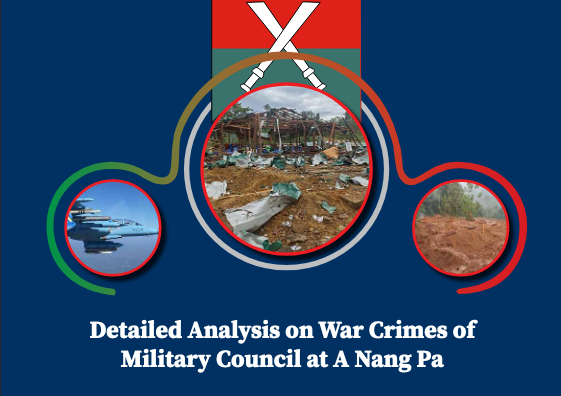Detailed Analysis on War Crimes of Military Council at A Nang Pa

The Panglong agreement made by Burmese leaders including General Aung San and ethnic leaders in 1947 was not implemented after Burma got independence in 1948 and the unitary system was practiced. Therefore, the ethnic areas got automatically under the mainland Burmese government. Since then, Ethnic equality and self-determinations were left only on the Panglong agreement paper. Due to these incidents, then started under two Kachin brothers, Zau Seng and Zau Tu, who were then educated Kachin leaders, Kachin political organization and army were formed.
The political organization of Kachin people, The Kachin Independence Organization (KIO) was formed on October 25,1960 and Lahtaw Zau Seng (Later he became a general) was the chairman. The aim of the organization was to achieve justice by political means. But, the demands were not fulfilled and Kachin Independence Army (KIA) was formed on February 5, 1961, which is the armed organization of Kachin people. Since then, KIA has had many armed engagements with Burmese army. Since then until now, Kachin people have been suffering human rights abuses, suppression and arbitrary killing by Burmese army.
In 1970, KIO had a peace talk with Burmese Socialist Program Party lead by General Ne Win with no success. Then, in 1994, KIO had signed a ceasefire agreement with therepresentatives of State Law and Order Restoration Council (SLORC) lead by General Khin Nyunt in 1994 with the reason of 1995 visit Myanmar year. From that time, there was no fighting until the era of SPDC (State Peace and Development Council). However, during the period of the ceasefire, there were political meetings and negotiations, but it did not go as far as expected.


